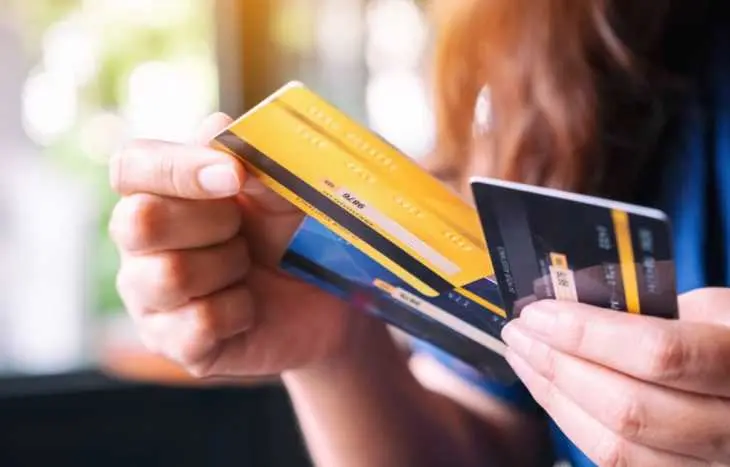Credit card debt can quickly spiral out of control if not managed properly. With high interest rates, minimum payments, and growing balances, it’s easy to feel overwhelmed.
However, paying off your credit card debt is entirely possible with the right strategies and a clear plan.
This guide will provide actionable steps to help you eliminate your credit card debt, improve your financial health, and regain control of your finances.
1. Understand Your Debt Situation
The first step in tackling credit card debt is to assess your current financial situation.
Steps to Assess Your Debt:
- List all your credit cards.
- Note the outstanding balance, interest rates, and minimum payments for each card.
- Calculate your total credit card debt.
Why It Matters:
Understanding the full scope of your debt will help you prioritize repayments and create an actionable plan.
2. Create a Realistic Budget
A budget helps you allocate funds specifically for paying off your credit card debt while covering essential expenses.
How to Build a Budget:
- Calculate your monthly income.
- List your fixed expenses (e.g., rent, utilities, insurance).
- Identify discretionary expenses (e.g., dining out, entertainment).
- Allocate as much as possible towards debt repayment.
Tip: Use budgeting tools or apps to monitor your spending and stay on track.
3. Choose a Debt Repayment Strategy
There are two popular methods for paying off credit card debt:
A. The Snowball Method:
- Pay off the smallest debt first while making minimum payments on others.
- Once the smallest debt is cleared, roll that payment into the next smallest debt.
- This approach offers quick wins, keeping you motivated.
B. The Avalanche Method:
- Focus on paying off the highest interest rate debt first while making minimum payments on others.
- Once cleared, move on to the next highest interest debt.
- This method saves more money on interest over time.
Tip: Choose the strategy that aligns with your financial situation and motivation style.
4. Pay More Than the Minimum Payment
Paying only the minimum amount keeps you trapped in a cycle of debt due to accumulating interest.
Why Pay More:
- Reduces your principal balance faster.
- Minimizes interest costs.
- Shortens the repayment timeline.
Tip: Even an extra $50 or $100 per month can significantly reduce your debt over time.
5. Consolidate Your Debt
If you have multiple credit cards with high interest rates, debt consolidation may be a good option.
Debt Consolidation Options:
- Balance Transfer Credit Card: Move high-interest debt to a card with a 0% introductory APR.
- Personal Loan: Use a lower-interest loan to pay off high-interest credit card debt.
Benefits of Consolidation:
- Simplifies payments into one monthly installment.
- Reduces overall interest payments.
Caution: Avoid new credit card spending after consolidating your debt.
6. Negotiate Lower Interest Rates
Contact your credit card issuer and ask if they can lower your interest rate.
How to Negotiate:
- Highlight your good payment history.
- Mention offers from competing credit card companies.
- Be polite but firm in your request.
Why It Works:
Lower interest rates reduce the total cost of your debt, allowing you to pay it off faster.
7. Stop Adding to Your Debt
To make meaningful progress, stop using your credit cards while paying off debt.
How to Stop Accumulating Debt:
- Remove saved card details from online stores.
- Use cash or debit cards for daily purchases.
- Avoid impulse purchases.
Tip: Carrying a credit card only for emergencies can help prevent unnecessary spending.
8. Build an Emergency Fund
Unexpected expenses often lead to more credit card debt. Building an emergency fund can prevent this cycle.
How to Build an Emergency Fund:
- Start small (e.g., $500 to $1,000).
- Gradually increase your savings to cover 3–6 months of expenses.
- Use a separate savings account to avoid temptation.
9. Track Your Progress
Monitoring your debt repayment progress keeps you motivated and focused.
Ways to Track Progress:
- Use spreadsheets or debt tracking apps.
- Celebrate milestones (e.g., paying off one credit card).
- Review your plan regularly and adjust as needed.
Tip: Visualize your progress with charts or debt payoff trackers.
10. Seek Professional Help if Needed
If your debt feels unmanageable, consider reaching out to a credit counselor or financial advisor.
Benefits of Professional Help:
- Personalized debt management plans.
- Assistance in negotiating with creditors.
- Financial education and guidance.
Ensure you work with a reputable credit counseling agency to avoid scams.
11. Develop Healthy Financial Habits
Once you’ve paid off your credit card debt, focus on building good financial habits to prevent falling back into debt.
Healthy Financial Habits Include:
- Pay your balance in full each month.
- Avoid unnecessary purchases.
- Continue budgeting and tracking expenses.
- Build and maintain your emergency fund.
Paying off credit card debt requires commitment, discipline, and a solid strategy. Whether you choose the Snowball Method for motivation or the Avalanche Method for savings, the key is to stay consistent and avoid accumulating new debt.
By creating a realistic budget, prioritizing debt repayment, and seeking professional help if needed, you’ll be on your way to achieving financial freedom.
Remember: Every small payment brings you one step closer to a debt-free life. Start today, stay focused, and celebrate your progress along the way!

